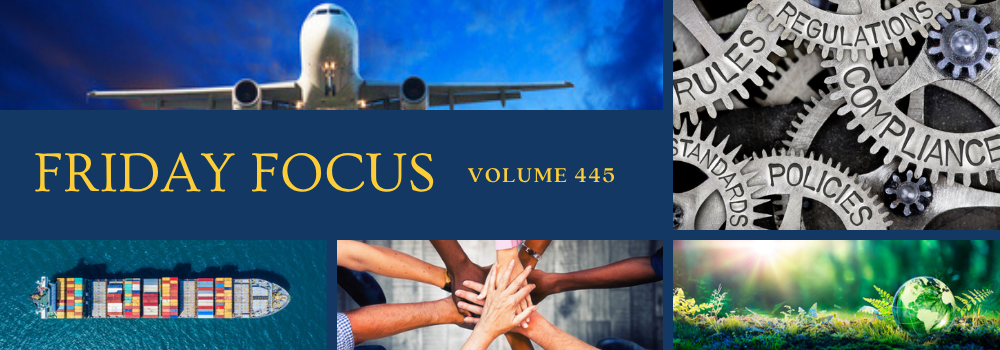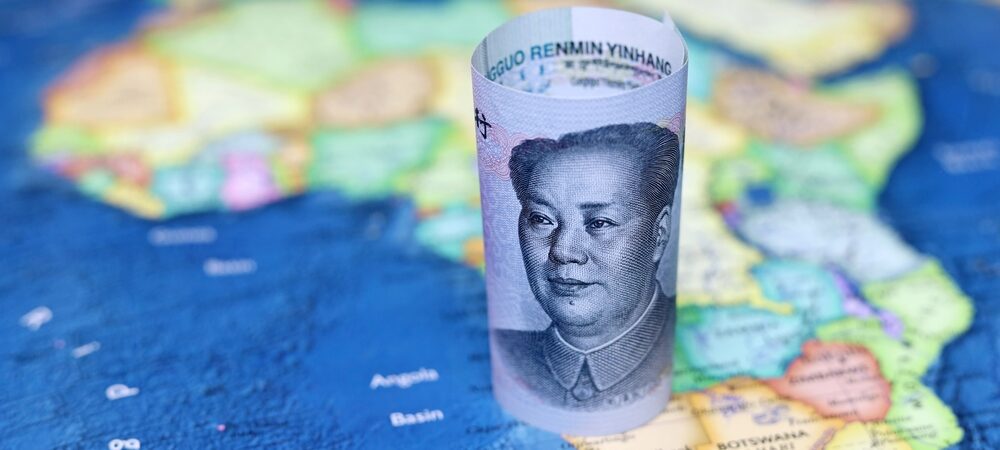WITA’s Friday Exchange Podcast: The Evolution of U.S. Trade Policy in the 21st Century
This week’s episode of WITA’s Friday Exchange was recorded during the 2025 WITA Virtual Intensive Trade Seminar. Speakers discussed the evolution of U.S. trade policy making in the 21st Century, dissected current trade policy developments, and analyzed the push and pull between three branches of government in the U.S: Congress, the Executive, and the Courts.
Featured Speakers:
Introduction: Kenneth Levinson, CEO, WITA – the International Trade Membership Association
Peter Harrell, Non-Resident Fellow, Carnegie Endowment for International Peace; former Senior Director for International Economics and Competitiveness, National Security Council under President Biden; former Deputy Assistant Secretary, Counter Threat Finance and Sanctions, U.S. Department of State under President Obama
Brian Pomper, Partner, Akin; former Chief International Trade Counsel, U.S. Senate Finance Committee
Stephen Vaughn, Partner, King & Spalding; former General Counsel, Office of the U.S. Trade Representative during President Trump’s first term
Moderator: Nicole Bivens Collinson, Managing Principal, Operating Committee, International Trade & Government Relations Practice Leader, Sandler, Travis & Rosenberg, P.A.
Watch the Video on YouTube | Listen on Spotify or Apple Podcasts
Recorded at 9:00 AM ET on 10/7/2025 | WITA
A Widening Net: A Short History of Chinese Export Controls on Critical Raw Materials and Their Usage
Following is an excerpt:
On 9 October 2025, the Chinese government announced various new export control measures for rare earths and related technologies, two of which deserve particular attention: restricting exports of related technologies and know-how and imposing licensing requirements on foreign firms. These steps follow a steady build-up of restrictions in recent years and should come as little surprise. In this short history, we provide a high-level overview of how China’s export control regime for critical raw materials has evolved in a multi-year strategy to regulate the export of strategic materials and technologies.
October 2025 Restrictions: A New Phase of Controls
China’s latest export control measures add a new dimension to its critical raw materials governance. Announced on 9 October 2025, the new rules extend beyond regulating physical exports to also restrict the transfer of rare-earth–related technologies and know-how. For the first time, Beijing is asserting jurisdiction over foreign-made products that contain or are manufactured using Chinese-origin rare-earth materials. Beijing now requires overseas firms to obtain export licences from the Chinese Ministry of Commerce. This shift signals a transition from managing commodities to governing strategic technologies, embedding export controls within China’s broader security and industrial policy agenda….
Strategic Application and Global Implications
The strategic logic behind adopting new measures is multilayered. While official statements emphasise national security and non-proliferation, the timing frequently coincides with geopolitical developments. Most notably, these overlap with US export controls or tariff actions, suggesting retaliatory symbolism.
The export restrictions appear to function as dynamic policy levers rather than absolute barriers, allowing for both escalation and de-escalation. Beijing has selectively granted export licenses following each round of controls. As a Global Trade Alert analysis from July 2025 has shown, the earlier export controls on gallium, germanium, graphite, and other materials had comparatively modest effects on American imports, while the rare earth export controls from April 2025 bit significantly harder. Following US-China economic talks in May 2025, Beijing suspended dual-use export control listings for several US firms, a useful bargaining chip in ongoing negotiations.
Ultimately, this pattern reveals a strategy that is both systematic and flexible. China has built a sophisticated administrative system to manage its strategic assets. At the same time, it has been using it as a geopolitical tool for signalling and leverage. The takeaway for global industries is that these controls are not temporary disruptions, but a permanent feature of the new competitive landscape. The question is no longer if China will use these powers, but how and where it will apply them next.
10/08/2025 | Marius Risse | Global Trade Alert
AGOA Expiry Could Reshape Africa’s Trade as China Deepens Tariff-Free Access
As the expiry date of the African Growth and Opportunity Act (AGOA) approaches, concerns are mounting across the continent that the lapse of the landmark United States trade initiative could reverse recent gains in Africa’s export diversification. The potential non-renewal of AGOA threatens to erode preferential market access for African exporters of agricultural goods, textiles, and light manufactures — sectors that have been critical to inclusive growth and employment creation.
Established in 2000, AGOA grants duty-free access to the US market for over 1,800 product lines from eligible Sub-Saharan African countries. The framework was designed to encourage industrialisation and export-led development by reducing trade barriers and incentivising investment in non-extractive sectors. However, unless the Act is renewed by the US Congress, African exporters could soon face steep tariff increases that would sharply diminish the competitiveness of their products.
According to a recent analysis by the United Nations Conference on Trade and Development (UNCTAD), average tariff hikes would disproportionately impact textiles and apparel, agriculture and food, and light manufacturing—the very sectors most critical for diversifying Africa’s export portfolio. UNCTAD data, based on US International Trade Commission (USITC) figures, shows that tariffs on apparel exports could rise by 20 percentage points, while agricultural and food exports could face an average increase of 9.8 percentage points.
In 2024, total US imports from AGOA-eligible countries reached approximately $29.4 billion, with minerals and chemicals accounting for $10.2 billion, followed by metals, machinery, and transportation at $4.6 billion, and agriculture and food at $2.7 billion. Without AGOA, many of these exports—particularly those in value-added segments—would be exposed to tariffs that could significantly reduce their price competitiveness in the American market.
For economies such as Lesotho, Eswatini, and Kenya, where apparel exports to the United States have been major sources of formal employment, the potential expiry presents a critical policy dilemma. In countries like Ethiopia and Madagascar, AGOA has stimulated the development of industrial parks and attracted foreign direct investment in labour-intensive manufacturing. The removal of preferential access could slow the progress of such industrialisation efforts, amplifying vulnerabilities in economies still transitioning away from commodity dependence.
Yet, while uncertainty surrounds the stance of the current US administration regarding AGOA’s renewal, China’s recent introduction of a tariff-free trade policy with 53 African countries represents a shifting trade horizon that could reshape Africa’s global partnerships. Under this arrangement, African nations can export a wide range of goods to China duty-free, providing an alternative and potentially more predictable market for diversification. Beijing’s policy aligns with its broader strategy of strengthening South–South cooperation and supporting industrial development across the continent through initiatives such as the Forum on China–Africa Cooperation (FOCAC).
10/06/2025 | Times Reporter | The South African Times
Paths Forward (and Backward) for Free Trade
The United States and Canada have enjoyed a long and fruitful relationship that dates back more than 150 years and has grown to encompass deep economic, cultural, and political ties. Side by side, our countries prevailed in both world wars and the Cold War, and with the triumph of the West at the dawn of the 1990s, unprecedented steps were taken to thin our common border and integrate our economies. The 21st century was to be one of economic liberalism, and the U.S.-Canada relationship was to exemplify all that free markets and free trade have to offer.
Earlier steps toward economic integration were always understood to be part of a one-way trip, but that assumption is now being challenged. In the United States, President Trump has maintained his popularity in part by tapping into a deeply rooted suspicion of free trade held by parts of the electorate. That wariness is not entirely unfair, as the benefits and costs of globalization have not been shared equally. Unfortunately, the U.S. administration has also embraced the unorthodox notion that trade is often zero-sum in nature, and that running a trade deficit means you’re losing (or even being preyed upon).
The argument for free trade does not need to be re-litigated here in any depth. Trade permits greater specialization and unleashes economies of scale, and thereby lowers production costs and lifts living standards. It is a positive sum undertaking. It would be counterproductive to erect trade barriers between states, provinces, cities, or neighbourhoods; they are equally illogical between friendly and like-minded nations. Large and persistent trade deficits can sometimes reflect underlying economic imbalances and therefore bear monitoring, but to focus only on the balance of trade is to miss the point.
Exactly where U.S. trade policy will land, and how trading partners will respond, is still highly uncertain. Over the past nine months, the administration has increased tariffs against virtually all trading partners and the levies continue to evolve week by week. In a welcome move toward stability, the U.S. has negotiated tentative agreements with some of its largest overseas trading partners—however, the deals have yet to be ratified and have been largely one-sided, which casts doubt on their durability. The outlook is further clouded now that many U.S. tariffs are in limbo before the courts.
Canada, after initially finding itself squarely in the administration’s crosshairs, has avoided across-the-board tariffs for the time being. However, the situation remains fluid and North American trading arrangements will return to the fore with the joint review of the USMCA/CUSMA, which must be held by July 2026 (we’ll use “USMCA” in this report). The review process will give all sides an opportunity to air grievances, demand changes, and posture. A constructive outcome would help assure businesses and investors that the North American economic project remains intact; a bad one could upend continental trade and the economy.
10/06/2025 | Aaron Goertzen | BMO Economics
Beware the “Securitization” of Trade Policy
In recent years, U.S. trade policy has seen a creeping takeover by “security” concerns. The precise scope of these concerns is unclear, but they appear to cover both the traditional aspects of military-related security as well as the vague and amorphous concept of “economic security.” Some of the professed concerns are, in my view, a stretch, but that hasn’t slowed their encroachment. As an example, we now have, if I am counting correctly, fourteen ongoing Section 232 cases in various stages, and with the extension to derivative products in some instances, the coverage is going to be extremely broad. Are imports of “upholstered wooden products” a national security threat? I have doubts!
These developments have led to a new policy/scholarly field to consider these issues, with law journal articles by legal scholars such as Kathleen Claussen and Ben Heath and Mona Paulsen, and a podcast by Peter Harrell, who all provide good analysis of what has been happening.
But should it be happening? Are policymakers on the right track? In my view, policymakers should rethink some aspects of what they are doing in relation to security and trade. In the past, it has sometimes taken years for people to question the conventional wisdom on security/foreign policy. Once we start going down a road, it’s hard to get off it even when it becomes clear we are going in the wrong direction. I’m hoping – although I wouldn’t say I’m hopeful – that today the questioning can come sooner.
While there are, of course, real security issues in the world, some of which interact with trade, in my view the policies being implemented in this context often exaggerate the scale and scope of the problems. Instead of responding appropriately to actual threats, what we often see are disproportionate responses to situations that are not nearly as threatening as suggested, and these responses may actually trigger more security risks than they resolve.
10/06/2025 | Simon Lester | International Economic Law and Policy Blog
WITA – We put the community in trade community.
Information about upcoming WITA and trade community events







